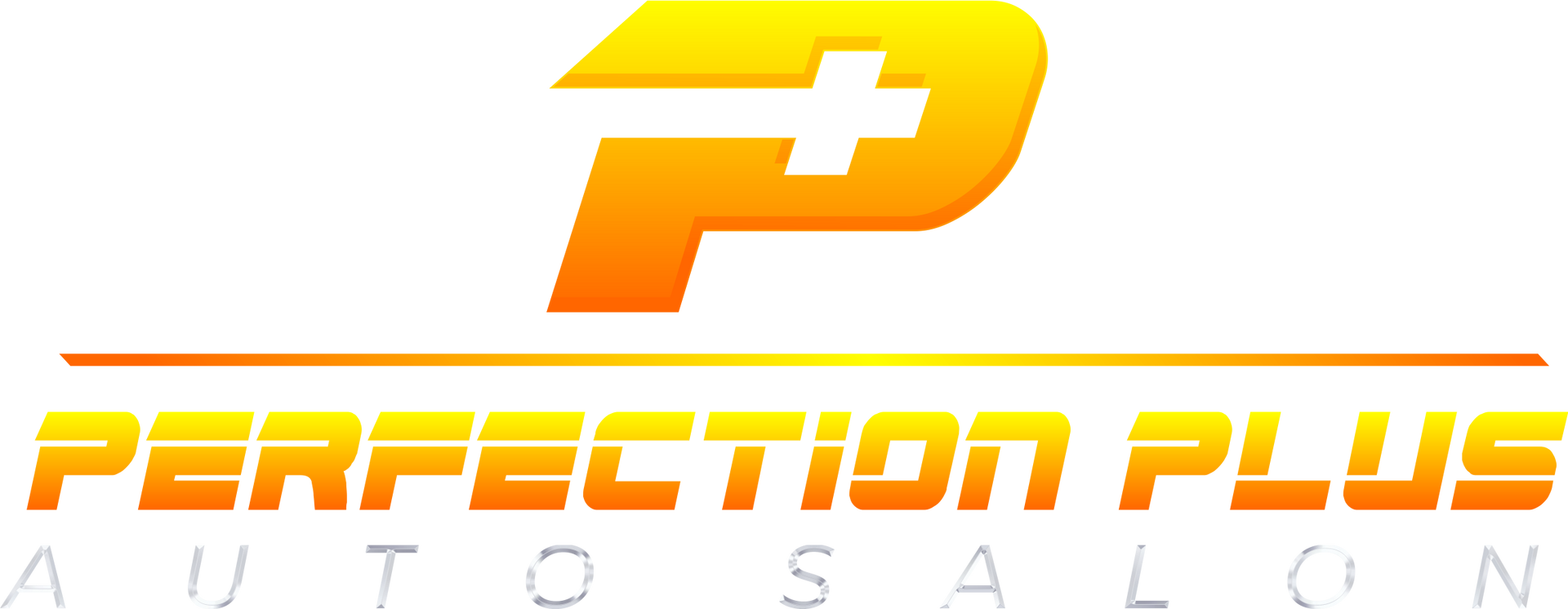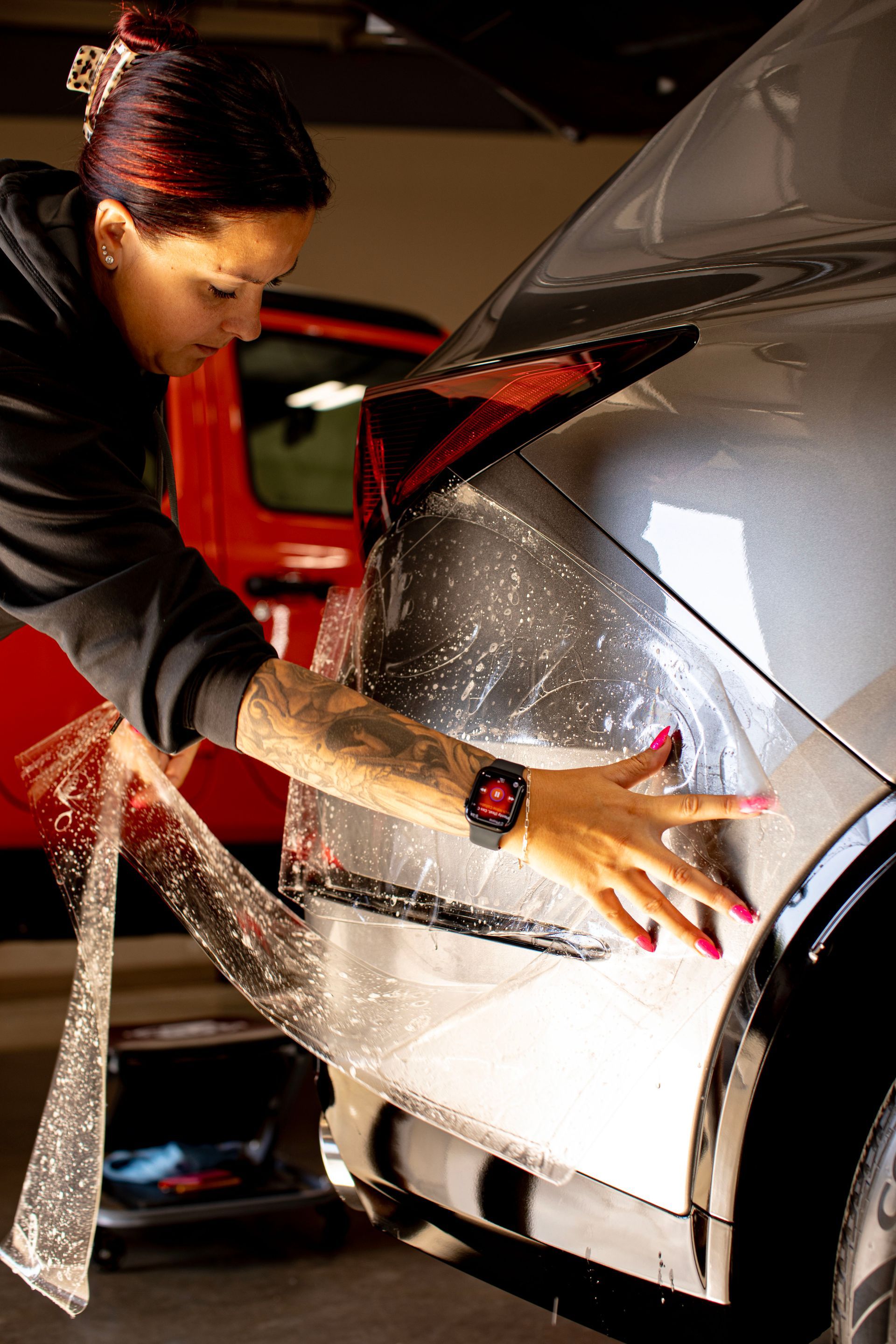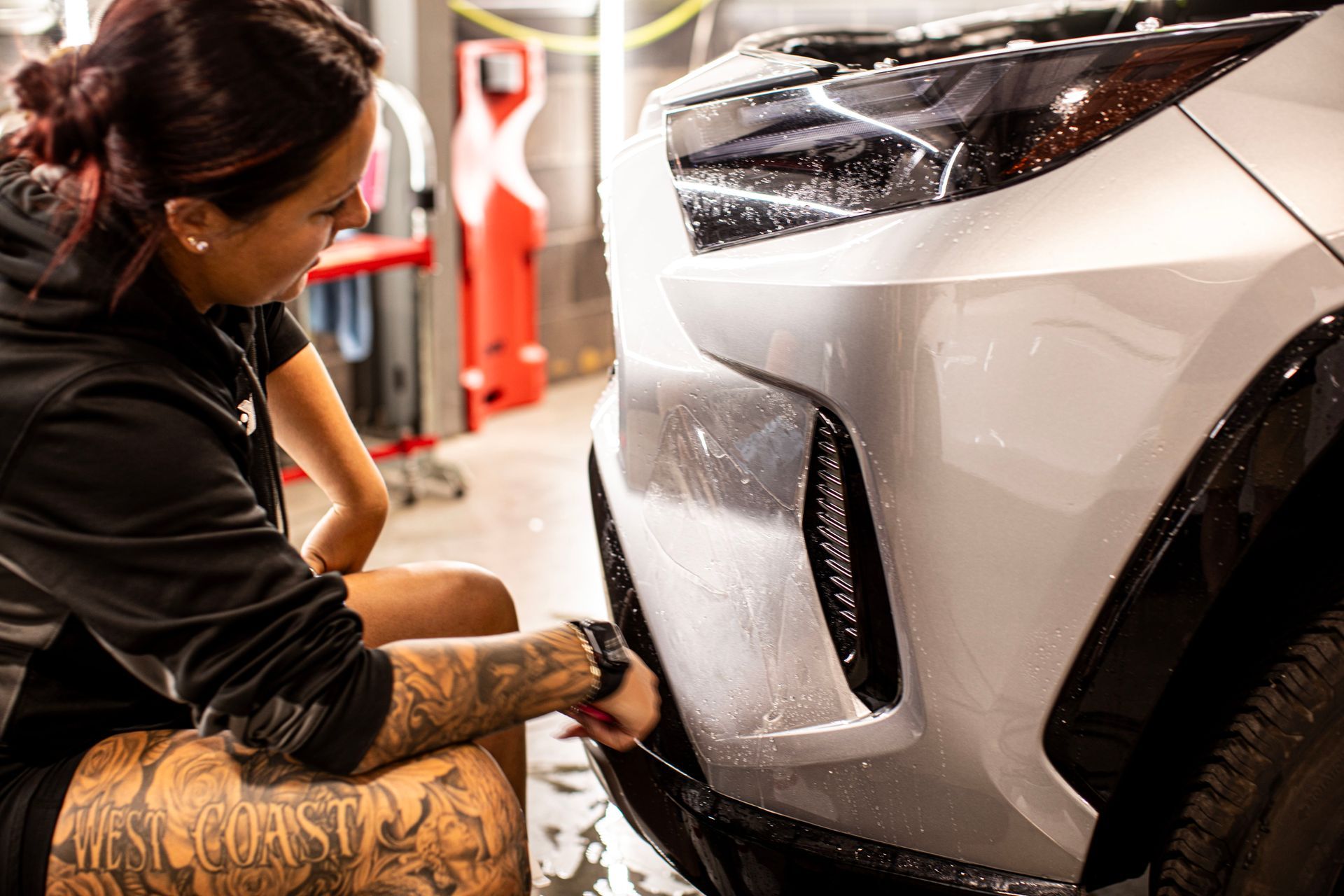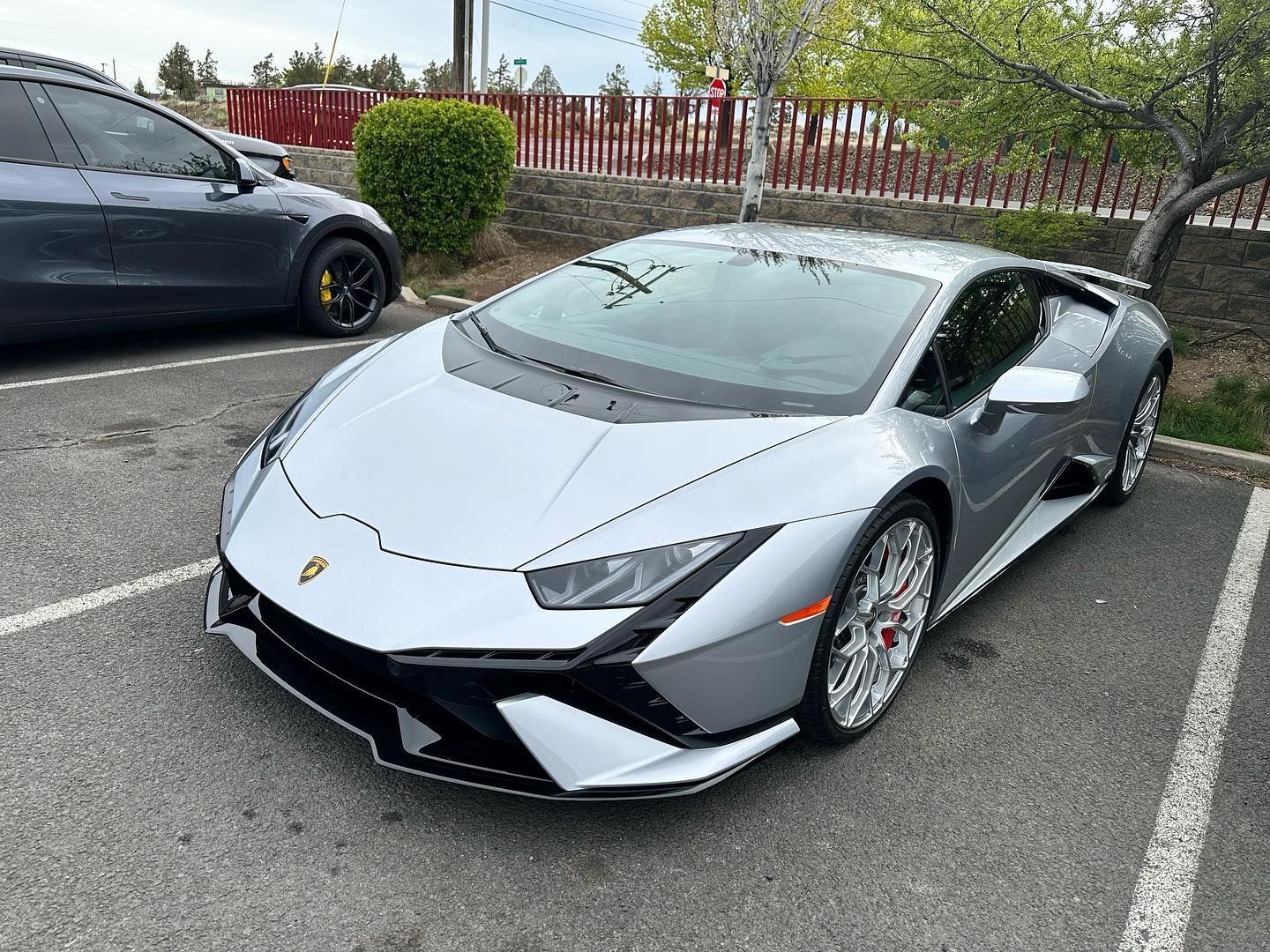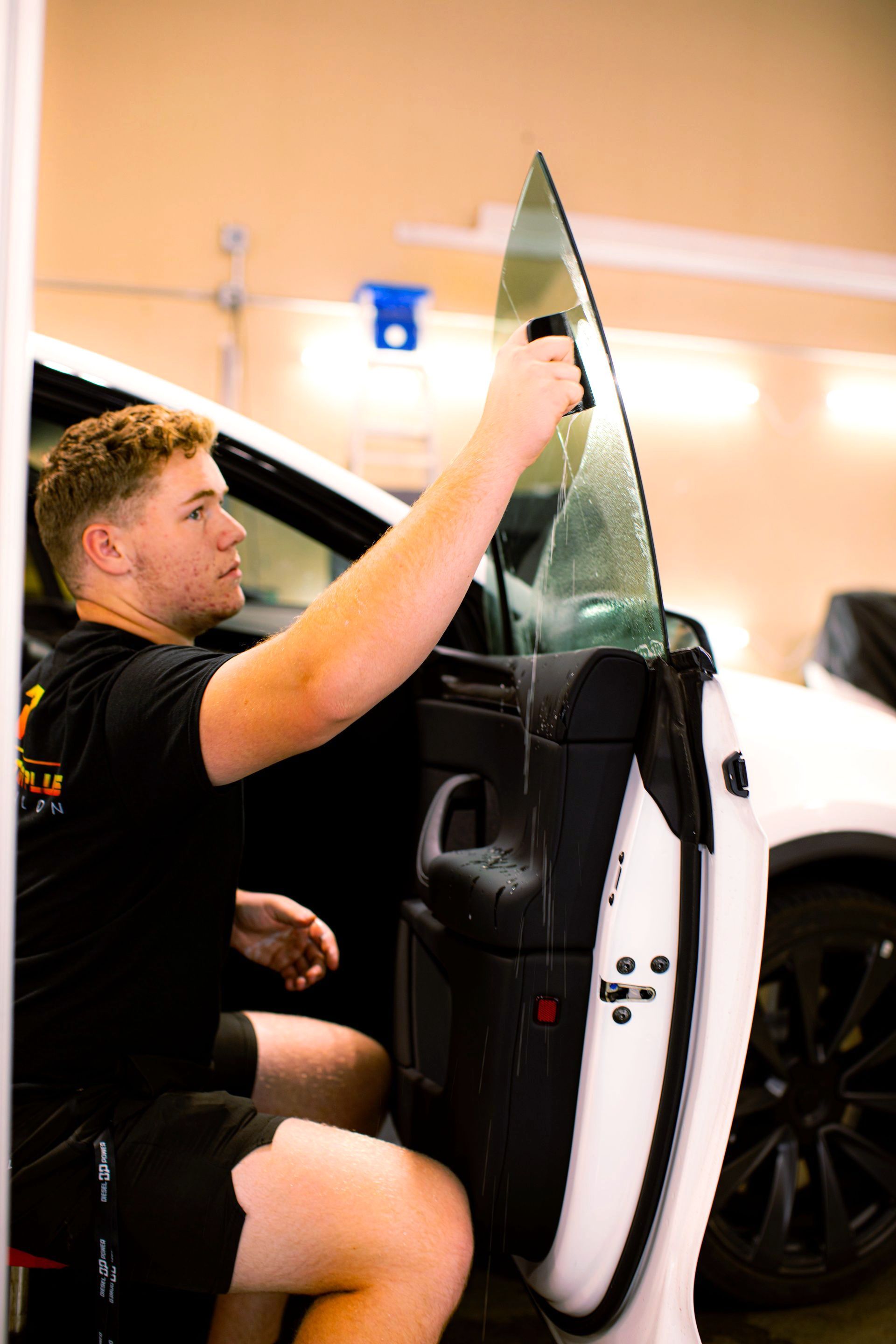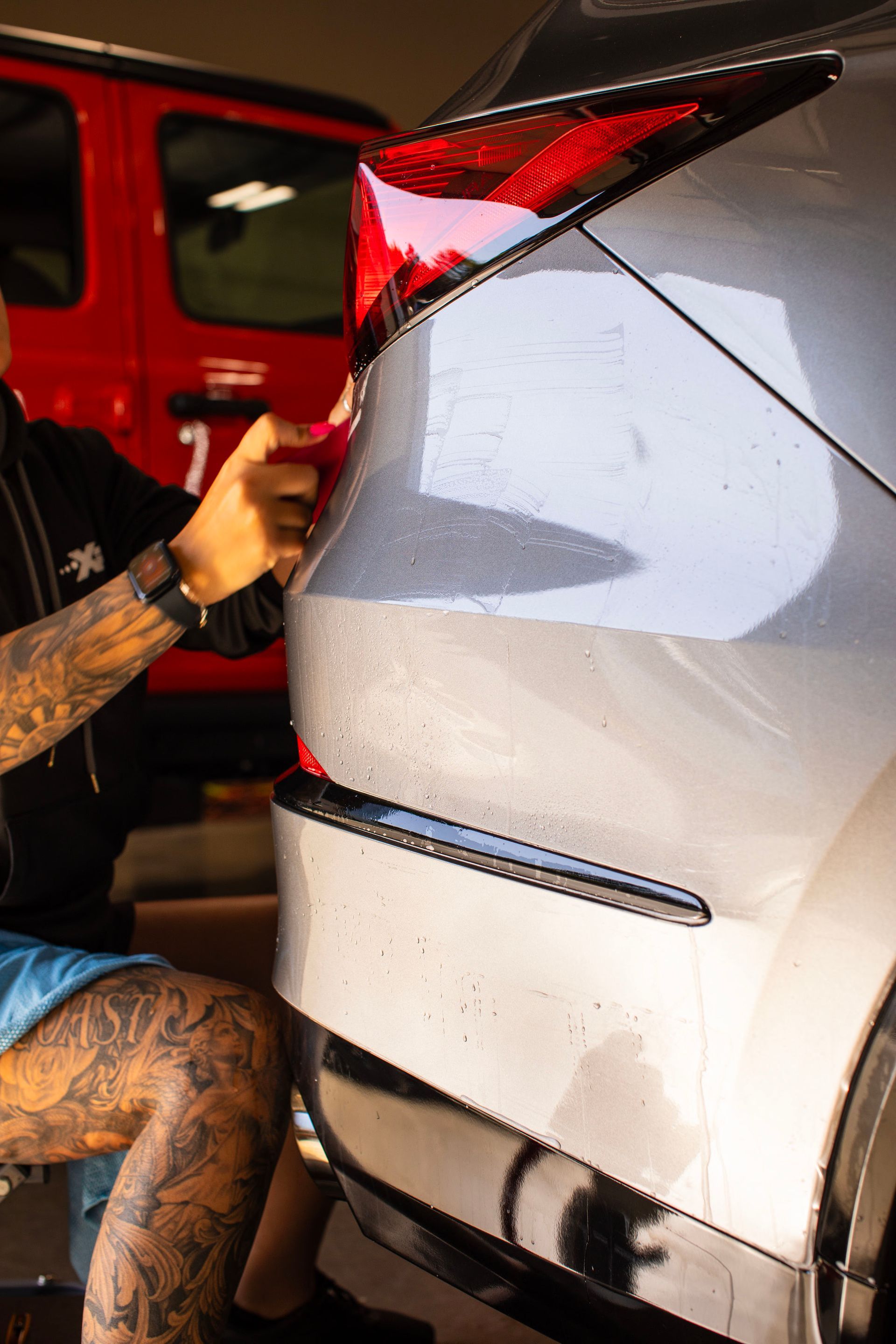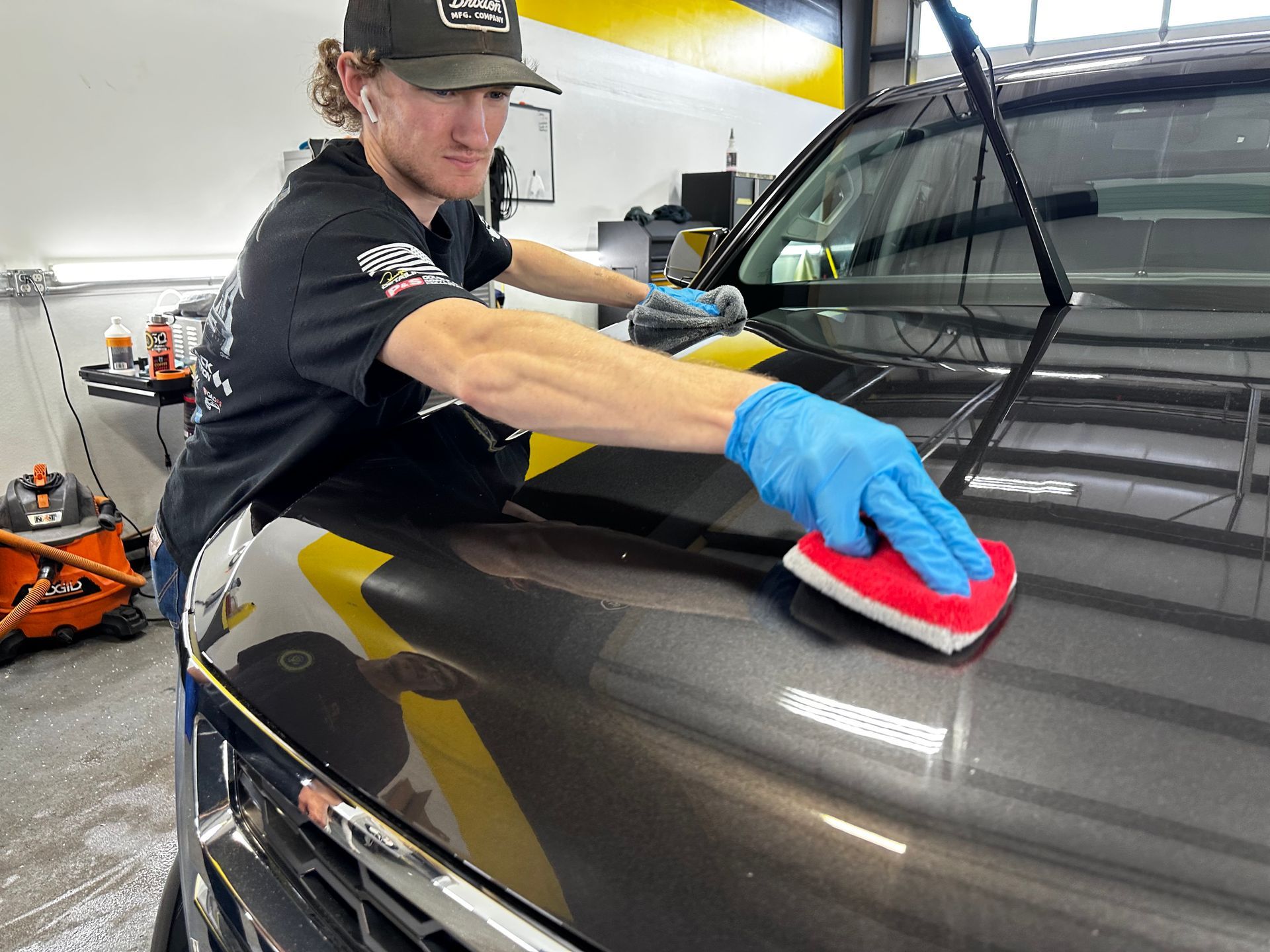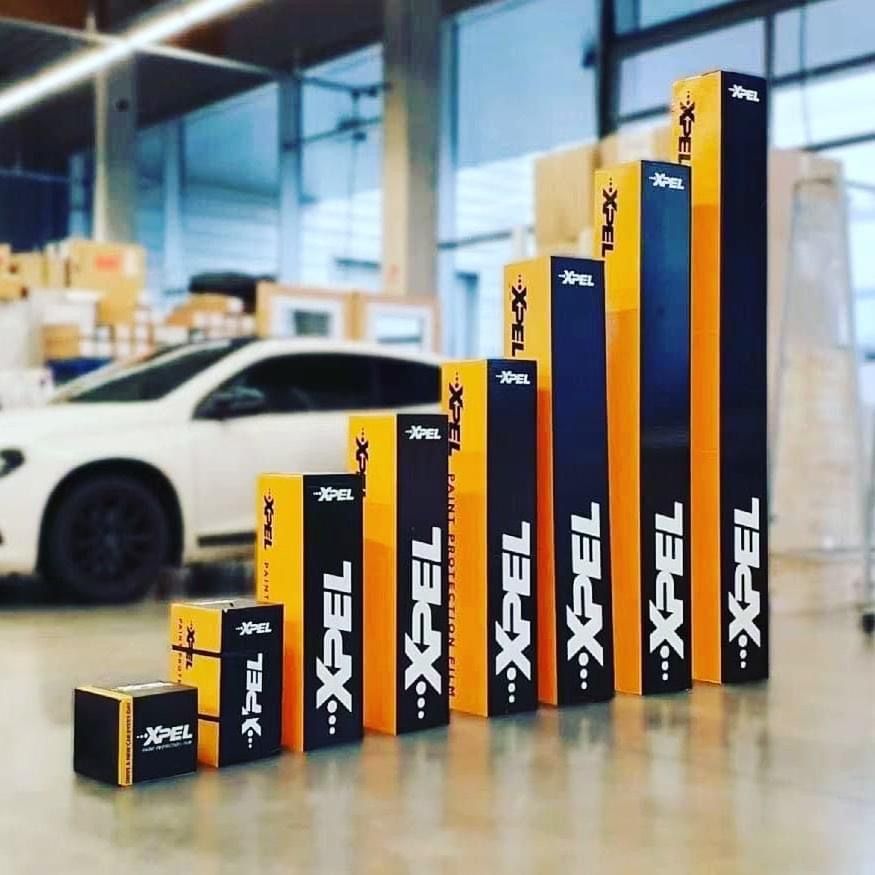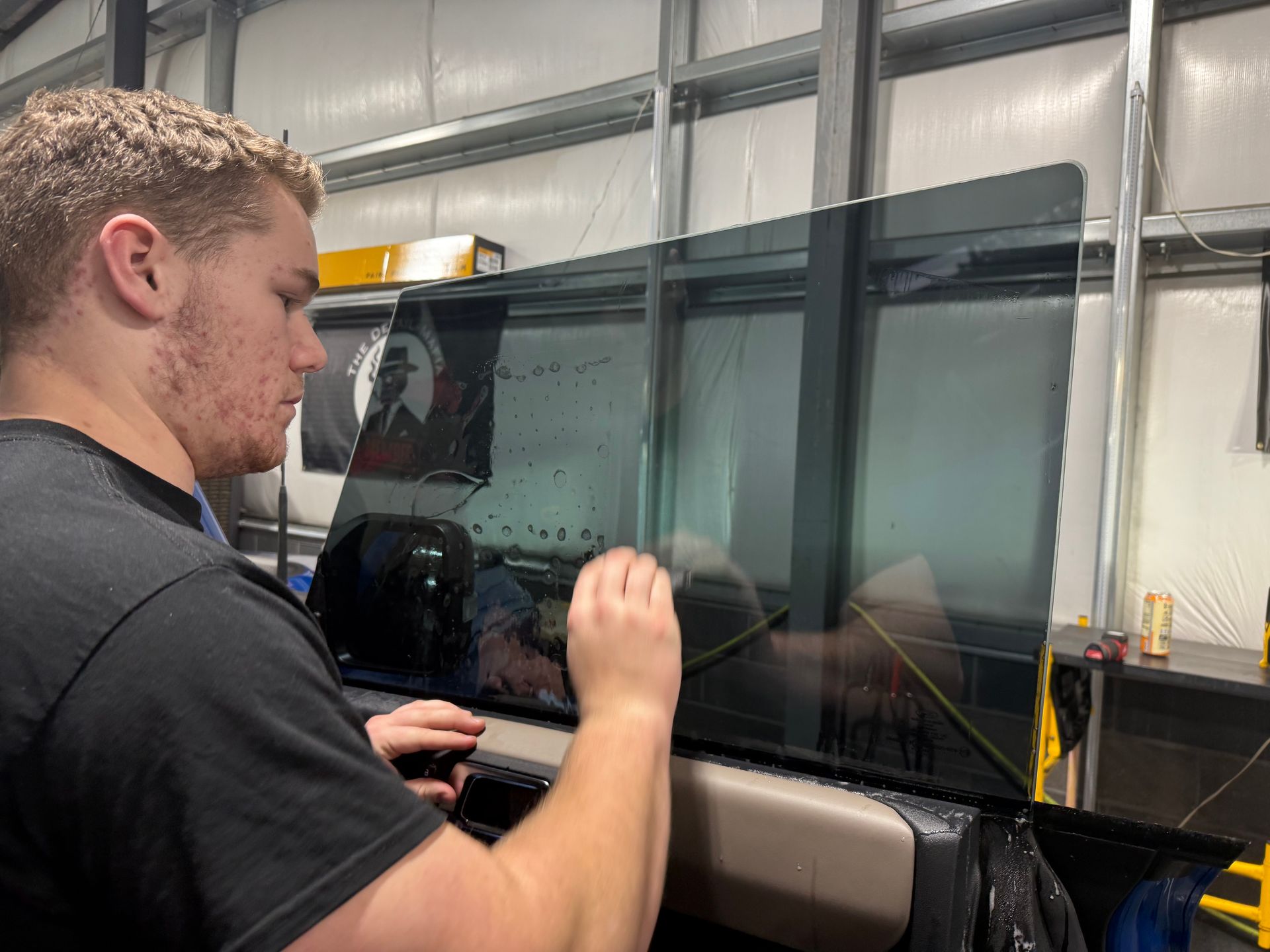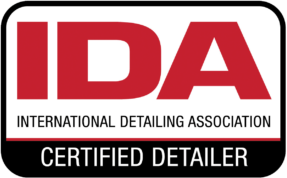Enhancing Vehicle Resale Value with Professional PPF: The Ultimate Guide
GET A FREE ESTIMATEWhen it comes to preserving your car's resale value, every scratch and sunburn can hurt more than you think. Many car owners face the challenge of keeping their vehicle looking new while ensuring it doesn't lose its worth over time. This is where professional paint protection film steps in as a game changer. Road debris, UV rays, and minor abrasions are everyday hazards that can depreciate your car's beauty and thus its market value.
Professional-grade paint protection film provides a durable shield against scratches, environmental factors, and UV rays, preserving the vehicle's exterior. This preservation not only maintains the car's aesthetics but also enhances its resale value by safeguarding the paint from wear and tear, ultimately appealing to potential buyers and commanding a higher price.
How PPF Enhances Vehicle Resale Value
When it comes to selling a car, first impressions are everything. Potential buyers want to feel confident that the vehicle they're purchasing has been well-maintained and remains in excellent condition. This is where a paint protection film truly shines as a valuable asset for the resale market. The ability of a paint protection film to act as a shield against environmental factors, road debris, UV rays, and chemical stains plays a crucial role in maintaining the pristine appearance of a car. By keeping the original paint untouched and preserving the exterior, a paint protection film ensures that the vehicle looks newer for longer, thus directly contributing to higher resale offers.
Consider this scenario: A potential buyer walks up to two identical models of a car—one fitted with paint protection film and the other without it. The car protected by PPF showcases a flawless, glossy exterior despite its age, giving the impression that it has been meticulously cared for. On the other hand, the unprotected car exhibits signs of wear and tear, such as minor scratches, paint damage from road debris, and fading due to sun exposure. As a result, the paint protection film-equipped car will likely fetch a higher resale price due to its well-preserved appearance. In addition to maintaining a higher resale value, a paint protection film also instills confidence in potential buyers regarding the overall care and maintenance history of the vehicle.
A well-maintained exterior projects an image of responsible ownership in terms of protecting and preserving the vehicle against common hazards encountered on roads. This perception not only translates into higher resale offers but can also expedite the overall sales process by attracting more interested and serious buyers. It's important for potential buyers to feel assured that they are investing in a high-quality, well-cared-for vehicle. The presence of a paint protection film serves as tangible evidence of your commitment to maintaining your vehicle's exterior in top-notch condition. This can positively influence their willingness to pay more for a car equipped with PPF compared to a similar model without this safeguarding film.
Key Benefits of Professional PPF
When it comes to preserving the appearance and value of your vehicle, professional paint protection film offers a myriad of advantages. Let's explore some of the key benefits in detail.
- Superior Durability: Professional paint protection film is more than just a layer of protection; it's like an invisible shield for your vehicle. Unlike basic protective coatings, professional paint protection film is designed to provide remarkable durability. Its unique composition of thermoplastic urethane makes it highly flexible. and resistant to damage. The self-healing properties of professional paint protection film are particularly noteworthy: minor scratches and abrasions on the film can disappear when exposed to heat from the sun or a heat gun. This characteristic alone sets professional PPF apart from traditional coatings, ensuring that your vehicle's paint remains pristine even after facing everyday wear and tear.
- Protection from UV Rays: One of the often overlooked but crucial benefits of professional paint protection film is its ability to block up to 99% of harmful UV rays. Exposure to UV radiation can lead to paint oxidation, fading, and overall deterioration of a vehicle's exterior. By acting as a barrier against UV rays, professional paint protection film not only preserves the aesthetic appeal of the vehicle but also maintains the original color and shine of the paint. This protection is vital for retaining the vehicle's allure and preventing premature aging, ultimately contributing to maintaining its resale value over time.
- Enhancing Aesthetic Appeal: Professional paint protection film serves as a transformative agent, enhancing the visual appeal of a vehicle in multiple ways. Beyond its protective functions, it provides a glossy finish that accentuates the natural luster of the vehicle. When applied correctly by skilled professionals, a paint protection film can elevate the aesthetic quality of the vehicle, making it look better than brand new. The seamless application of professional PPF ensures that it conforms impeccably to the curves and contours of the vehicle, making it virtually indistinguishable from the original surface. This enhanced aesthetic appeal has a direct impact on the perceived value of the vehicle, effectively contributing to its desirability in the resale market.
These exceptional benefits underscore why professional paint protection film is considered an indispensable investment in safeguarding and augmenting the value of your vehicle.
Comparing Professional and DIY PPF Installation
When considering professional installation, it's undeniable that the expertise of a skilled professional brings a level of precision that is not easily replicated. Professional installers ensure perfect fitment to complex curves and edges without compromising the integrity of the vehicle's paint. They use high-quality films that offer long-lasting protection, potentially extending to up to 10 years with proper care. This superior longevity translates into substantial peace of mind for vehicle owners, knowing that their investment is well protected for the long haul.
On the other hand, DIY installation kits may seem attractive due to their initial cost savings; however, the old proverb "you get what you pay for" holds true. Inexperienced application can result in air bubbles, improper alignment, and edges lifting over time. Moreover, the risk of causing cuts to the paint during DIY installation is a major concern, potentially reducing the vehicle’s value and necessitating costly repairs. One common issue with DIY installation is the formation of air bubbles beneath the film. These air bubbles not only compromise the visual appeal of the paint protection film but can also lead to premature peeling and degradation of the film.
Additionally, achieving precise alignment on complex curves and edges requires a level of expertise that may be challenging for inexperienced installers. In contrast, professional installers possess the necessary skills and tools to seamlessly apply the paint protection film without leaving any air bubbles or imperfections. Their experience allows them to navigate around curves and edges with ease, ensuring a flawless finish that enhances both protection and aesthetic appeal. DIY kits might promise cost-effectiveness at first glance, but when considering long-term implications such as potential reduction in resale value due to improper installation and subsequent damage to the vehicle’s paint, opting for professional installation emerges as a far more prudent choice for savvy vehicle owners.
While DIY kits may appear enticing due to their initial cost advantage, the potential risks associated with improper application and subsequent damage outweigh the upfront savings. Professional installation not only guarantees a seamless fitment that enhances protection and aesthetics but also provides long-term durability that significantly contributes to preserving the vehicle's resale value.
PPF: Protection Against Everyday Damage
Just like how sunscreen shields your skin from harmful UV rays, a paint protection film safeguards your vehicle from everyday hazards. Imagine driving down the highway—pebbles ping off your car's exterior; bugs splatter across the hood; and airborne debris scratches the paint. This is where a paint protection film steps in as invisible armor, absorbing the impact of these common occurrences. A good analogy for a paint protection film would be protective sports gear. When an athlete wears pads to shield themselves during a game, they're insulating their body from potential harm. Similarly, a paint protection film acts as a layer of defense against environmental factors, road debris, and pesky insects.
Protecting Against Stone Chips
Stone chips are like tiny missiles aimed at your car's exterior. They're almost impossible to dodge, especially if you're cruising on a gravel-strewn road or following a construction truck. A paint protection film absorbs the impact of these stones, sparing your paintwork from unsightly blemishes. Vehicles equipped with high-quality paint protection film exhibit up to 50% less paint damage compared to unprotected vehicles. This significant reduction in wear and tear makes a compelling case for the protective capabilities of PPF.
Consider this: Let's say you decide to sell your car after a few years of use. The paint protection film will have helped maintain your vehicle's showroom quality by shielding it from chips and scratches. This can make it more appealing to prospective buyers who value a well-kept exterior. Additionally, bird droppings and insect splatters may seem harmless, but they contain acidic substances that can etch into your car's paint if not cleaned promptly. A paint protection film provides a barrier against these corrosive materials, ensuring your vehicle's exterior remains free from lasting damage.
It's important to note that when it comes to reselling your car, potential buyers often prioritize vehicles that exhibit minimal wear and tear. With PPF protecting your car, it can better maintain its pristine appearance over time, allowing you to potentially fetch a higher resale price. From safeguarding against stone chips and insect splatters to reducing paint damage, the protective benefits of paint protection films are numerous and substantial.
Maintenance Tips for Long-Lasting PPF
Maintaining your vehicle's paint protection film isn't just about keeping it looking great—it's about preserving its protective abilities. Let's start with the first crucial step.
- Regular Cleaning: One of the most vital ways to keep your paint protection film looking good and performing well is to wash your vehicle regularly, but not just with any car soap and cloth. Using pH-neutral car shampoo and soft microfiber cloths ensures gentle treatment that won't degrade the paint protection film over time. It's like giving your car a spa day to keep it shining and protected. Have you ever used a cleaning product that seemed too harsh? It probably left your hands feeling dry and your skin irritated. The same thing can happen to your car's paint protection film if you use cleaners with strong chemicals, causing the film to deteriorate, reducing its ability to protect your vehicle.
- Avoiding Automated Car Washes: While automated car washes are convenient, they may not be good for the long-term health of your paint protection film. The brushes used in these car washes can potentially lift the edges of the film, compromising its protective coverage. Instead, opt for touchless car washes, which use high-pressure water and gentle detergents to clean without physically touching the vehicle. Imagine having a delicate sticker on your car. If someone keeps pressing on its edges, they'll eventually start peeling off. The situation is similar with paint protection film; constant contact with brushes in automated car washes can compromise its adhesion, leaving it vulnerable to wear and tear.
- Annual Inspections: Just like going to the doctor for an annual check-up, scheduling an annual inspection with a professional paint protection film installer is key to ensuring maximum protection is maintained. During this inspection, the installer will check for any signs of wear and tear as well as lifting edges that could potentially compromise the paint protection film's effectiveness. Think of it like getting a periodic oil change for your car. You wouldn't skip it because you know it's essential for maintaining your vehicle's performance and longevity. Similarly, annual inspections for your paint protection film reinforce its longevity and effectiveness, ensuring that it continues to provide optimal protection for your vehicle.
By following these maintenance tips—including regular gentle cleaning, avoiding harsh automated car washes, and scheduling annual inspections—you'll be well-equipped to maintain the durability and effectiveness of your valuable paint protection film investment.
Top-Notch Paint Protection Film Service in Redmond, OR
Perfection Plus Auto Salon in Redmond, OR, offers matchless paint protection film service to keep your vehicle looking pristine. Our highly skilled team applies paint protection film with precision, ensuring your car's paint is safeguarded from road hazards, chips, and scratches without compromising its original beauty. With Perfection Plus Auto Salon, you’ll enjoy peace of mind knowing your vehicle is protected by the best in the business. Call us at (541) 598-6193 to get started with your paint protection film service!
